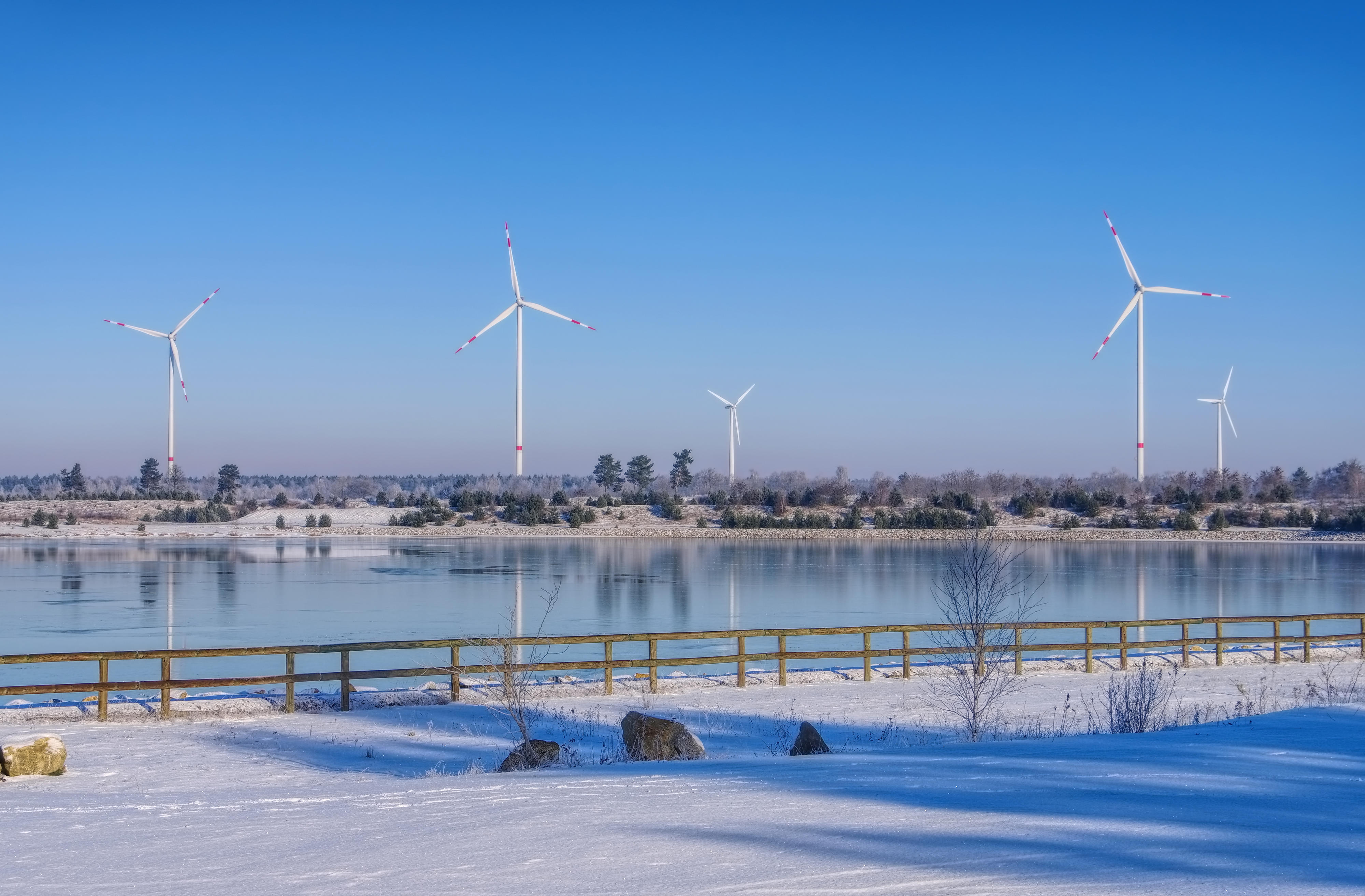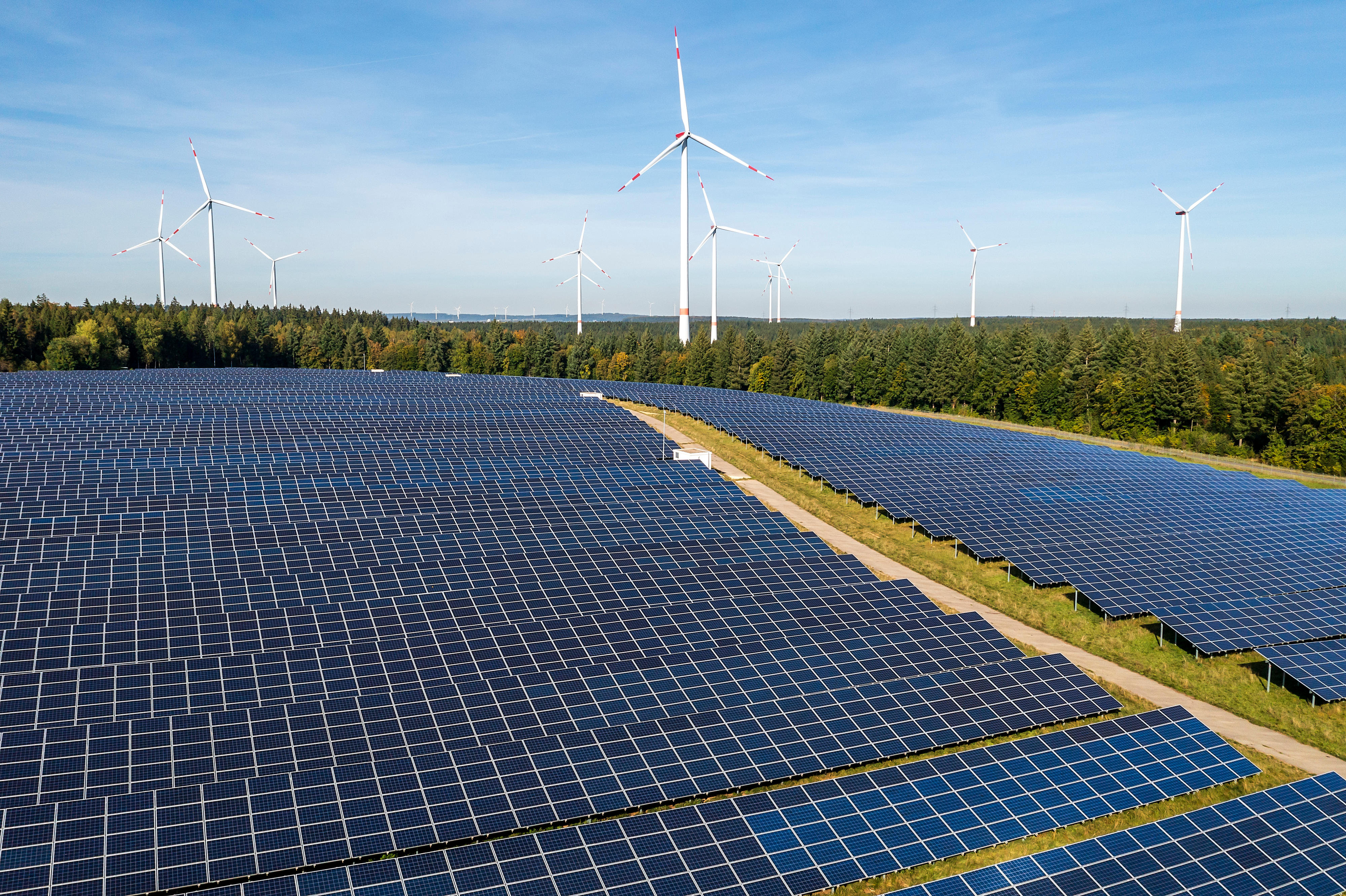Hint: This website is not optimized for your browser version.
Electricity generation in April and May 2018
15 June 2018 – Total electricity generation in Germany in April and May was 2.5% lower compared to a year earlier. Renewable generation increased by about 14%. Conventional generation fell year-on-year by around 13%.
Germany's total electricity generation from conventional and renewable energy sources in April and May 2018 amounted to 82.3 TWh, a year-on-year decrease of 2.5%. This is due in part to the fact that the public holidays that were in June of last year were this year in May, and electricity consumption and thus generation is lower on public holidays. Renewables produced 36.9 TWh (up 14%), while generation from conventional sources was 45.4 TWh (down 13%).
Renewables contributed 45.4% of the electricity consumed in Germany, a year-on-year increase of 4.4 percentage points. Two dates stand out in particular here: on 1 May and 21 May, public holidays with strong winds and/or sunshine, renewables produced so much that, for a short period of time, they supplied all of the electricity consumed. According to the data available on the SMARD website, this has happened three times before: on 8 May 2016, 30 April 2017 and 1 January 2018.
This is expected to happen more often in the future because of the continued growth in renewables. A secure supply of electricity is constantly guaranteed by sufficient conventional power plant capacity. In addition, electricity is traded across borders. Germany can therefore also import electricity from its neighbouring countries, if necessary.
Renewables supplied all of the electricity consumed on two occasions in May. The example of 1 May shows that, at around midday, renewables produced more electricity than was consumed in Germany (orange line).
The highest hourly output (in absolute terms) from all energy sources that was recorded in the course of the two months was 82 GWh and was produced between 11am and 12pm on Tuesday, 5 April. The lowest output was 30.5 GWh and occurred early in the morning on Friday, 22 April. The highest output was up 1.8% year-on-year, while the lowest was down 17.8%.
The graph illustrates electricity generation and consumption in April. It shows total electricity generation and consumption on each day in the month. The highest hourly output occurred on 5 April. This is reflected in the overall figures for that day: total output over the whole day was also the highest recorded on any single day in the month.
Highest and lowest renewable output
The majority of the renewable electricity supply in Germany comes from wind and solar generation. Wind and solar produce their highest output in strong winds and prolonged bright sunshine. This was the case in particular on 30 April. In April, Germany's high pressure system Norbert, for example, resulted in warm temperatures and an increase in generation from solar photovoltaics (PV). The unusually high number of hours of sun for that time of the year led to a high proportion of electricity from solar PV.
In 2018, the month of May was also considerably sunnier than in 2017. Consequently, solar PV output at 5.9 TWh was up 15.6% on the previous year's figure of 5.1 TWh, and was the highest monthly figure ever recorded. The amount of wind energy generated in May was 7.2 TWh, a significant increase of 26.7% on the previous year (5.7 TWh). In 2017, the month of May was generally rainier, resulting in low solar PV output in several parts of Germany.
Renewable energy reached its highest hourly output at 55.3 GWh between 1pm and 2pm on Monday, 30 April. This is 4.5% more than the highest hourly output of 52.9 GWh in the same period a year earlier, and about 2.1 times the average hourly output in the period from April to May 2017 (25.2 GWh). Renewables generated their lowest hourly output of 8.3 GWh between 4am and 5am on 19 May, compared to the lowest output of 7.3 GWh in the same period a year earlier. On the public holidays and the days between the public holidays and the weekends in May, the reduction in conventional generation was relatively high. This led to an overall increase in the proportion of electricity supplied by renewables.
The graph shows generation and consumption on 30 April, when renewables produced their highest output. The detailed figures can be seen by hovering the mouse over the graph. The orange line illustrates electricity consumption.
Highest and lowest conventional output
When consumption is primarily low and there are sunny and windy conditions, and when, consequently, wholesale prices are low, it makes economic sense to reduce generation at technically less flexible conventional power plants for a number of days. Conventional plants have shown that they can adapt flexibly to generation from renewables and changes in electricity consumption. Conventional generation recorded its lowest hourly output of 14.6 GWh on Monday, 21 May, a public holiday, when renewables generated around three and a half times as much electricity. Conventional plants produced their highest hourly output of 51.5 GWh between 7pm and 8 pm on Tuesday, 17 April, when renewables generated just 9.4 GWh.
The article on Storm Sebastian published last October looks in more detail at the general flexibility of Germany's power plant portfolio.

